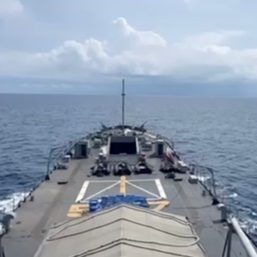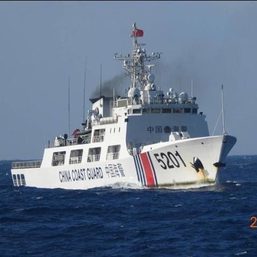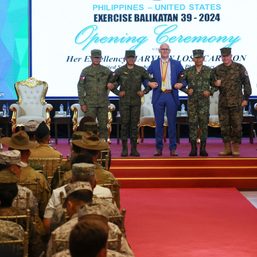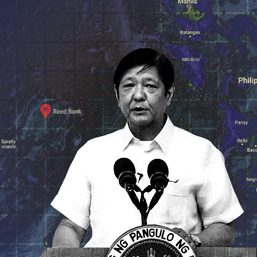SUMMARY
This is AI generated summarization, which may have errors. For context, always refer to the full article.
Philippine Navy chief Vice Admiral Giovanni Carlo Bacordo defended their decision to tap hundreds of militiamen to patrol the West Philippine Sea, citing a lack of personnel in their main forces.
“This is a stopgap measure. We don’t have the capability to be everywhere. [The militia] are our force multipliers. They can fill in in our absence,” Bacordo said in a press briefing aboard the BRP Jose Rizal on Monday, October 19.
Bacordo was replying to this reporter’s question about Senator Risa Hontiveros’ call for the Navy to instead send their personnel or the Philippine Coast Guard to patrol in closer waters instead of a militia derived from the Army’s Citizen Armed Force Geographical Unit (CAFGU) units.
Why the need for a militia?
The Philippine Navy and the Coast Guard are spread thin across the Philippines, which is surrounded by waters that all require security from the uniformed services.
The Armed Forces of the Philippines decided to deploy maritime militias in all 6 unified commands from Luzon to Mindanao, but they decided to prioritize deployment in Northern Luzon and the Western Command – two commands that secure waters in the West Philippine Sea.
The deployment of militiamen mirrors the policy of China and Vietnam, with the former using its militia to continue its aggression in Philippine waters.
What can a militia do the Navy can’t?
Bacordo emphasized that the militia members they are recruiting are based near the areas they are set to patrol. A militia man from Pampanga, for example, will be asked to patrol waters off the coast of that province.
This is different from the Navy and Coast Guard, who pooled in personnel from different regions of the country and then employed in vessels that need to patrol farther waters.
“We (the Navy) cannot be at a specific area for long. If we patrol the Bajo the Masinloc area, after a while, that same ship may revolve to patrol the West Philippine Sea area or patrol the Benham Rise, whereas the maritime militia can stay longer in an area that is their place of abode,” Bacordo said.
Why it is needed now
The Philippine military needs all the hands it can get as it is one of the most underequipped in the region.
Bacordo added that their growth is further stunted by the pandemic, which has delayed the shipment of materials for their modernization program.
Meanwhile, the AFP warned that tension is rising in South China Sea, which can lead to main Navy forces being spread out further in case a feared incident occurs. If it happens, the militiamen will be entrusted to patrol in closer waters, focused on securing the safety of Filipino fishermen. – Rappler.com
Add a comment
How does this make you feel?





There are no comments yet. Add your comment to start the conversation.